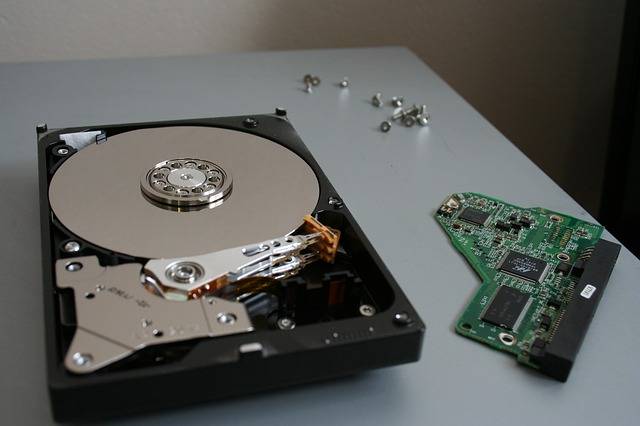Data backup is an essential business continuity and disaster recovery procedure. It should be undertaken on a regular basis. A business should review and audit their data backup processes security and recovery regularly as a form of insurance policy against disaster, theft or cyber attacks.
Need help with a review? Get in touch with SI ICT
Systems and applications software installation media
Once the software has been installed, the original media should be stored securely off-site, unless the software was downloaded. Similarly, any activation keys/codes should be stored securely.
Data file locations
In a network environment some data files might be stored on the server and other data files stored on local drives. In which case, separate backups may be required for servers, applications, databases, on-premise devices and non on-premise devices.
Ideally, a network solution should be provided, which ensures that all data is re-copied back to the server from backup medium.
One strategy would be to use a synchronisation service such as Drop Box, Google Drive, Microsoft OneDrive, or even SharePoint, instead of more traditional network disk storage.
Data backup strategy and frequency
There is likely to be a need for two parallel backup procedures. One to cover a complete systems backup of servers, usually as an image, and another to incrementally (or differentially) any backup data files that have been updated since the previous backup.
Remember that some data has to be preserved for many years – for example accounting records need to be kept for a minimum of six years.
Some backup media, such as tape or CD/DVD can be reused many times, but they do not have an infinite life and will need replacing after two to ten years depending on the quality and number of times used. Some additional points are made on this issue in the section on backup media degradation.
Solutions such as disk-to-disk, or disk-to-disk-to-tape, and cloud-based backup services do away with the need to worry about degradation.
Data backup responsibilities
A specific staff member should be given responsibility for the backup procedures. This person must be able to:
- Regularly ensure that all data files (server and local) are incorporated in the backup cycle(s)
- Adapt the backup criteria as new applications and data files are added
- Modify the backup schedule as required
- Review, access, interpret backup logs and react to any errors notified
- Restore data if files are accidentally deleted, or become corrupt
- Regularly test that data can be restored from backup media
- Maintain a regular log of backups and the locations where backup media are stored.
Applications backup routines
Many accounting and payroll applications have their own backup routines. It is good practice to use these on a regular basis (as well as conventional server backups) and always just before critical update routines. These backup data files should be stored on the server drive so that they are backed up along with the server.
Local Devices
Some users will have the data files of applications exclusively on their local drives for example payroll data. These will require their own regular backup regime, which (as mentioned in the previous paragraph) may consist of a combination of backing up to media and backing up to the server. Consideration should also be given to whether this data should remain on the local PCs, or whether it should be moved elsewhere.
Backup media
The selection of the right media to use for backups will depend on different criteria including, the available budget, the volume of data requiring backup and the networking operating software.
External hard disks or cloud backup, may provide good solutions. If an external service provider, or cloud option is being used, they should have their own backup regime. However, do not rely solely on this and ensure any third-party supplier meets or exceeds your backup needs.
Other media types such as tape or optical storage (CD/DVD/Blu-Ray) may also be considered as a cheaper alternative, but capacity and lifespan may be limited.
External hard disk drives are another option. However, any disk that must go off site for backup reasons should also be encrypted in case of loss or theft.
Backup location
Backups should be stored in a variety of both on-site and off-site locations. On-site backups are easily accessible when data has to be restored quickly, although they are at risk from emergencies such as fires or floods.
A large number of businesses use on-site safes. However, in a recovery situation these could be inaccessible for a period of time.
Off-site backups have the advantage that they will be recoverable following an emergency, but storage must be both secure and accessible.
Backup retention
Some types of records, such as accounting records for example, need to be kept for a minimum period of time and this must be considered when developing the data backup strategy.
Data backup media degradation/decomposition
Backup media degrades and the data stored on them decomposes over a period of time.
Optical media such as CD/DVD and Blu-Ray are particularly sensitive to light (photosensitive), so ensure that they are stored in a dark environment. They are also prone to physical damage when being handled.
Backups should be checked on a regular basis for signs of digital decomposition, and tested to check that data can be successfully restored.
In-house or cloud
Many internet service providers and third-party IT service organisations, now offer off-site data repositories and also complete online application solutions, either as standard or as a chargeable extra. This removes the need to internally support a server and its operating and applications software. However, there are a significant number of key security issues which should be covered as part of the contract/service level agreement (SLA). These should include:
- Level of encryption
- The countries in which the data is processed and stored (as this has potential issues with data protection laws)
- Data deletion and retention periods
- the availability of audit trails, covering who is accessing the data
- Ownership of the data if the provider goes into administration/receivership.
Where data is stored in the cloud, try to ensure that as little personal data as possible is processed and stored in this way. If this is not possible then at least anonymise the data so that individuals cannot be identified.
Ensure you can manually take your own backup copies of data stored with a third-party, and that this data is in a readable format and can be restored onto other services and applications.
Need help or support with your organisations Security - Data Backup?
Book a Free Consultation with SI ICT



